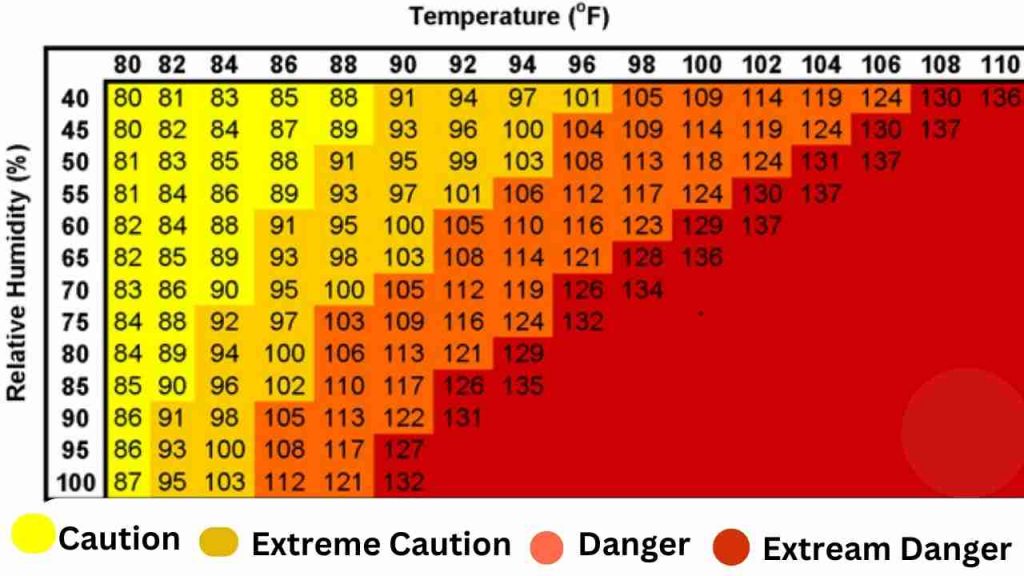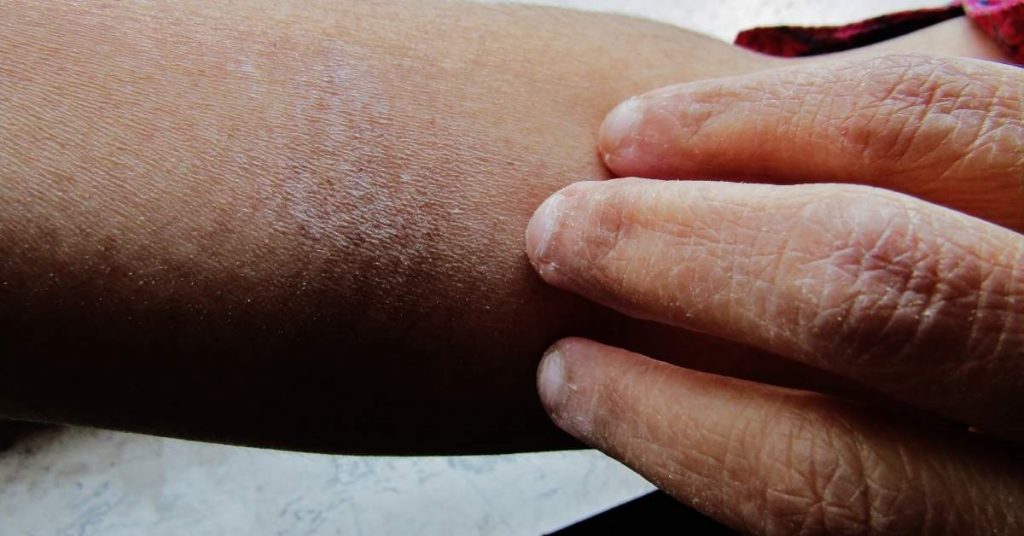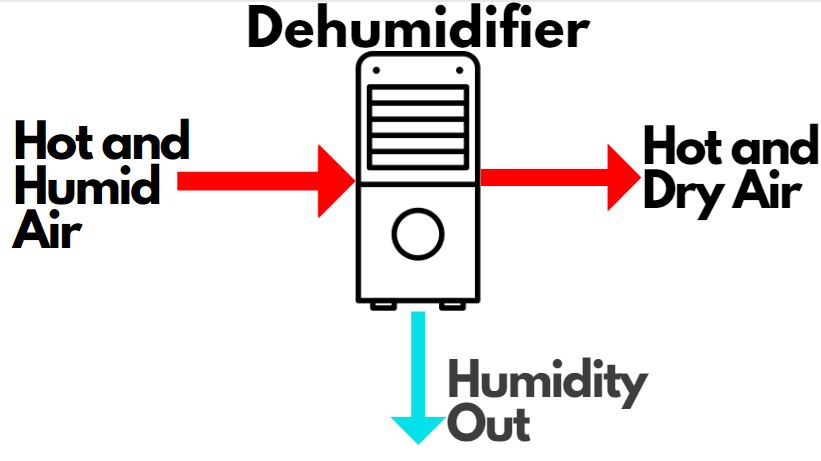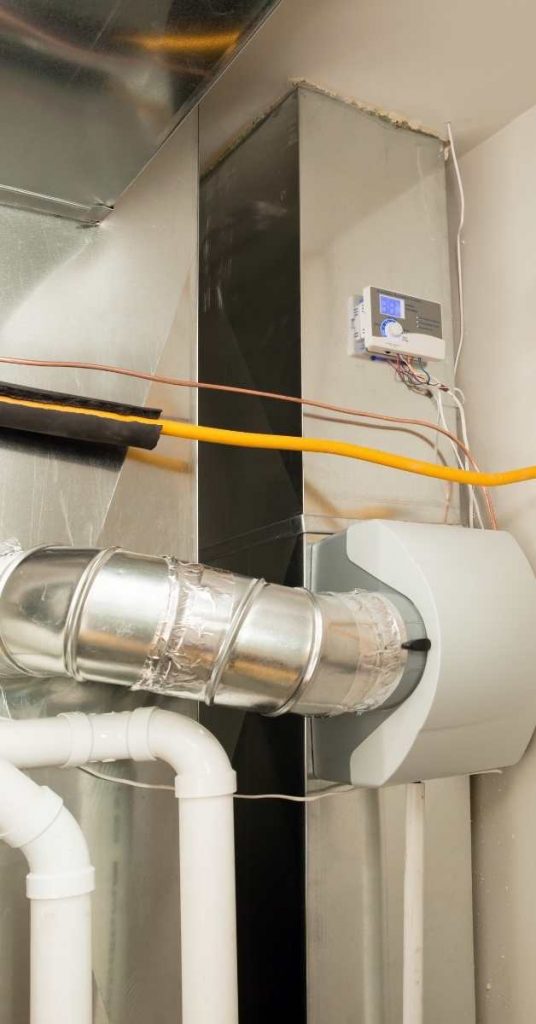
Maintaining the ideal house humidity is essential for comfort, health, and the preservation of your home and belongings. Here’s a summary of the ideal house humidity levels and how to increase or reduce them:
Ideal House Humidity
- The ideal indoor relative humidity (RH) generally falls between 30% and 50% for most homes. These levels provide a comfortable and healthy living environment.
- In colder climates during winter, indoor humidity levels may be lower (around 30-40%) to prevent condensation on windows and reduce the risk of mold growth.
- In warmer climates, you may aim for slightly lower humidity levels (around 40-50%) to maintain comfort while preventing excess moisture and mold growth.
How to Increase House Humidity
- Use a Humidifier: Portable or whole-house humidifiers can add moisture to the air. Properly size the unit for the space you need to humidify.
- Boil Water: Boiling water on the stove or using a kettle can introduce moisture into the air, especially in smaller rooms.
- Houseplants: Indoor plants release moisture through a process called transpiration. Having a few houseplants can contribute to higher humidity levels.
- Open Water Containers: Placing bowls of water near heat sources, like radiators or heating vents, allows the water to evaporate and increase indoor humidity.
How to Reduce House Humidity
- Use a Dehumidifier: Dehumidifiers remove excess moisture from the air. Use portable models in specific rooms or whole-house dehumidifiers for comprehensive control.
- Ventilation: Regularly open windows and doors to allow moisture-laden air to escape and fresh, dry air to enter. Use exhaust fans in kitchens and bathrooms.
- Air Conditioning: Air conditioning not only cools but also dehumidifies the air. Ensure your AC unit is properly maintained and sized for your space.
- Seal Leaks: Inspect your home for leaks in the roof, walls, windows, and doors, and repair them promptly to prevent moisture from entering.
- Use Exhaust Fans: Use exhaust fans in bathrooms and the kitchen to remove moisture at the source.
- Limit Indoor Plant Watering: Be cautious not to overwater indoor plants, as they release moisture into the air. Adjust your watering schedule as needed.
- Weatherproof Windows and Doors: Seal gaps and apply weatherstripping to doors and windows to prevent outdoor moisture from entering your home.
- Basement Waterproofing: Basements are prone to high humidity. Waterproof your basement, improve drainage, and use a dehumidifier to control moisture.
Is 65% humidity too high in a house?
65% humidity is high but not too high. While some people can live with it, some will find the indoor air sticky making living indoors uncomfortable. Lowering the humidity to about 50% will help.
Relationship between Humidity and Temperature

As I mentioned, humidity is directly proportional to temperature. But why is that though? To understand that, you will first need to get familiar with the water cycle.
- 1st stage – At room temperature, water is a liquid. When you apply heat to it, it evaporates turning to vapor. If you were heating the water in the kitchen, it means that the air around it contains more moisture than air in the farthest bathroom.
- 2nd stage – when you withdraw heat from the vapor (or introduce it to low temperature), the vapor condenses to form ice. When ice is formed, it means that the air holds less water vapor than in the 1st stage
- 3rd stage – The ice melts and turns back to liquid water.
This can help you understand why humidity is higher in a city like Miami but lower in Las Vegas. You see, Miami is close to the sea meaning that the air in Miami is saturated with water vapor from the sea.
In Las Vegas however, the air remains dry since it is a desert environment. As such, humidity is Las Vegas is one of the lowest in the US.
What surprises most people is that 75 degrees feels hotter in Miami than in Las Vegas. Why is that the case?
What you may not know is that 5% relative humidity in the air is equal to 1 degree of temperature. Therefore, the higher the relative humidity the hotter it feels.
You see, our bodies have their natural mechanism for cooling down through sweating. As the sweat evaporates from our skin, a cooling sensation is created.
That doesn’t work well when relative humidity is high. Since the air is already saturated with moisture, it becomes difficult for the air to take up more moisture (sweat in this case) and that is why it feels hotter, the skin sticky and generally uncomfortable when humidity is high.
Symptoms of High Humidity in the House
So, how can you tell if your indoor relative humidity is too high? The following are the signs that you indoor relative humidity is too high.
1. Mold Growth

Mold thrive in humid conditions. If you notice mold growing in your shower drain grout/caulk, on walls, under rags, in your sink drain and other damp areas of your house like the basement, you have high relative humidity in the house.
2. Musty Smells
Sometimes the mold and mildew grow in areas when you cannot see them and the only thing that will alert you about their existence is musty smells. The smells could be coming from inside your house or from the air registers.
Nonetheless, moldy smells in the house is a sign of high relative humidity and will need to be dealt with promptly.
3. Condensation on Windows and Toilets

Do you have a sweating toilet? That is condensation which forms when the cold water inside the tank comes into contact with the hot and humid air in the bathroom and condensation happens.
Condensation can also happen on the windows and start dripping on the floor. That is usually a sign that the indoor air is carrying a lot of moisture which needs to be reduced.
4. Worsening Asthma and Allergies
If you are asthmatic or are allergic to mold and dust mites, high humidity will make your condition worse. As we have seen, high humidity provides perfect conditions for mold, bacteria and dust mites to thrive indoors.
In addition to controlling the relative humidity in your house, you will also need to regularly change your AC filter. Using a high quality filter (MERV rating (8-12) will also come in handy.
5. Difficulty Sleeping
According to the Sleep Foundation, humidity directly affects how well or not you sleep. There are 4 sleep cycles that will be affected by both high and low humidity levels.
Personally what I have found out is that if the humidity levels are high, I can hardly sleep a solid 7 hours like I always do when the humidity levels are optimum. I always wake up once, twice or even thrive in the middle of the night.
Symptoms of Low Humidity Levels
Low humidity levels are just as bad as high humidity. The following are the signs of low humidity in your house:
1. Respiratory Problems
Low levels of humidity causes the drying out and irritation of sinus membranes. This results in nasal congestion. Viruses which survive in low humidity longer can also cause respiratory infections.
2. Itchy Skin

Have you ever heard of “Winter Itch”? Humidity is important in maintaining the natural moist condition of the skin. If the air is dry (without moisture to nourish the skin), the skin becomes dry and itchy.
Low humidity not only makes your skin itch but it also draws moisture from it causing it to crack.
3. Dry and Irritated Eyes
As you know, eyes need to stay moist in order to work properly. That doesn’t happen if the eyeballs are in a room full of dry air. The eyes lose the moisture/tears to the surrounding air which makes them dry and easily irritated.
With dry eyes, you will be blinking at a faster rate than you should, which will deteriorate your eyesight.
4. Damaged Wooden Floors and Furniture
In low humidity, wood shrinks/contracts. That leads to the creating of gaps between wood planks, some of which become permanent. You do not have to wait for this to happen in order to adjust you indoor relative humidity.
How to Lower/Decrease Humidity in the House
There are 2 ways reduce the humidity in your house:
- Using an air conditioner
- Using a dehumidifier
Depending on where you live, you may need both an air conditioner and a dehumidifier or just an air conditioner. I don’t see a situation when you need just a dehumidifier.
Related: Air conditioners vs dehumidifiers
Air conditioners are designed to cool your indoor air but they also remove humidity from the air. That is why air conditioners have drain lines.
On the other hand, dehumidifiers are primarily made to remove humidity from the indoor air. Dehumidifiers cannot cool a room.
If you are in a state like Arizona where humidity is around 38.5%, you will only need an air conditioner. However, if you are in Florida, you will most likely need an air conditioner and a dehumidifier.
You can have an air conditioner with a dehumidifier or you can have a portable stand-alone dehumidifier. Both are good choices.
1. How to Reduce Humidity Using and Air Conditioner
If you know how air conditioners work, you would know that the actually cooling happens at the indoor AC unit, known as an evaporator coil.
The coil is always cold due the cold refrigerant (Freon) flowing through it. This coil is also fitted with a fan which pulls warm and humid air from the house and also supply the cooled air back after cooling.
When the warm indoor air comes into contact with the coil, the refrigerant absorbs heat from the air and that is how the indoor air is cooled. The cooled air is then forced out of the coil and back to the house.

However, when the moisture (humidity) in the air comes into contact with the coil, condensation occurs. The condensate/water drips off to a condensate drain pan located under the coil.
From the drip pan the water is removed to the outside using the AC drain line. Depending on the size of your AC, 5 to 20 gallons of water can be drained out in a day, reducing the humidity from 80% to about 65%.
In order to have your AC deal with humidity properly, it has to be correctly sized. If the air conditioner is too big it will only need to run for a few minutes to cool the house and then it will turn off.
While that is good for cooling, it is not good for lowering humidity. You need the AC to run for a longer time. If you already have an oversized AC unit you will need to buy a dehumidifier.
Another thing that you should do to remove humidity from the house is to turn the fan on “AUTO” instead of “ON”. When the fan is in the “ON” position, it cycles air throughout, not giving the condensate on the coil time to drip off, but instead cycles it back to the house hence humidity doesn’t reduce.
With the fan set to “AUTO” it turns off in between cooling cycles allowing the condensate to drip off and hence lower the indoor humidity.
To make sure that the air conditioner is working perfectly (for both cooling and lowering humidity), schedule regular maintenance by a professional HVAC technician.
Related: How AC reduces humidity
2. Reducing Humidity Using a Dehumidifier

A dehumidifier is specifically made to remove humidity from the room. It draws in warm and humid air from the house, cools the air to remove the moisture then heats the air as it is being released back to the house.
As you can see, a dehumidifier cannot be used instead of an air conditioner. However, the two can work together.
The AC will reduce the humidity from the highs of 80% and when it reaches 65% the dehumidifier will take over. Humidifiers have a bucket which needs to be regularly emptied but can also be connected to a drain hose for continuous dehumidification.
The good thing about running a dehumidifier is that it uses less electricity and is therefore cheaper to run. You can also lower the humidity to levels where air conditioners cannot.
If you are in a position to have both, I would recommend using both an air conditioner and a dehumidifier to reduce humidity levels in the house.
For folks in hot and humid areas like Florida, Louisiana, Michigan and Iowa, having a whole-house dehumidifier will come in handy.
How to Increase Humidity in the House?
During the cold months of winter, air conditioners will go off and furnaces will roar to life. Unfortunately, unlike AC units which can help deal with high humidity levels, furnaces will make the problem worse.
As I mentioned, the potential for cold air to hold moisture is quite low. When the furnace pulls the cold air from the house for heating, it removes the little moisture that it still has.
As result, what you get from your return air registers is warm and dry air. And that is a problem. It is worse for states in arid areas like Nevada, Arizona, Utah and New Mexico.
The best way to deal with low humidity is by installing a humidifier. A humidifier introduces water vapor into the air.

There are different types of humidifiers. You can buy a stand-alone humidifier to humidify a certain area of your home but if you are in the arid states of the US I would recommend a whole-house humidifier.
The following are the different types of humidifiers:
- Warm mist humidifiers
- Cool mist humidifiers – Under cool mist humidifiers we have evaporator, ultrasonic and impeller humidifiers
- Whole-home humidifiers
Evaporative cool mist humidifiers are the most common types of humidifiers. Here, a reservoir holds cold water which it dispenses in a basin.
The humidifier has wicking filter which then absorbs water from the basin. Its fan then pulls warm air from the room and uses it to evaporate the water. As a result, the relative humidity in the house is increased.
Wrap Up
And that is just about everything on the best humidity levels and how to increase as well as reduce in both summer and winter. In summary, you should try as much as possible to have your relative humidity between 40% and 50%.
The general range is between 30% and 60% but like temperature, some like it colder than other. You can play with different settings to see what works best for you and other members of your family.





